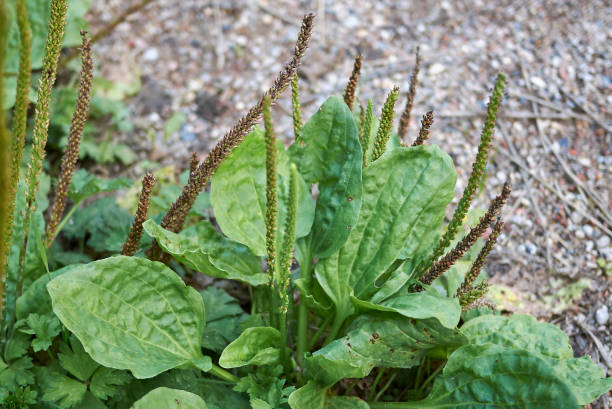The plantain plant (Plantago major), often dismissed as a mere weed, has a long history of medicinal use and is worth a closer look. Not to be confused with the tropical fruit plant of the same name, this plant is a small green herb that grows abundantly in many parts of the world. This article will delve into the remarkable properties, uses, and cultivation practices of the humble plantain plant.
Understanding Plantain
The plantain plant, belonging to the Plantaginaceae family, is a perennial herb recognized by its wide oval or egg-shaped leaves and cylindrical seed head that rises from the center. The plant is native to Europe and Asia but has spread worldwide. Though commonly found in lawns and driveways, it is far more than an ordinary weed.
Medicinal Marvel
Plantain boasts several medicinal properties and has been utilized for centuries in herbal remedies. Its leaves have anti-inflammatory, analgesic, and antibacterial properties, and have traditionally been used to treat minor wounds, skin irritations, and insect bites. Plantain also aids in soothing the digestive system when ingested, and its seeds, known as psyllium, are used in over-the-counter laxatives.
Culinary Uses
While plantain is predominantly known for its medicinal uses, it can also play a role in the kitchen. The young, tender leaves can be eaten raw in salads or cooked as you would spinach or kale. The seeds, similar to psyllium husk, can be used as a source of dietary fiber.
Cultivating Plantain
Growing plantain is surprisingly straightforward, as it thrives in a variety of environments, from fertile garden soil to the cracks in a concrete sidewalk. Plantain prefers full sunlight but can tolerate partial shade. Sow seeds directly in the ground during spring or fall and lightly cover them with soil. The plant is hardy and drought-tolerant, requiring little maintenance once established.
Harvesting and Storage
You can harvest plantain leaves at any time during the growing season. Pick the younger, tender leaves for culinary use and the older, tougher leaves for medicinal purposes. After harvesting, wash the leaves and pat them dry. For storage, you can keep fresh leaves in the refrigerator for a short time, or dry them for long-term use.
Final Thoughts
Plantain is a testament to the saying “a weed is simply a plant whose virtues have not yet been discovered.” With its abundant medicinal properties and culinary uses, this underappreciated herb deserves a place in both our gardens and our home remedies kit. However, like with any plant, remember to do your own thorough research or consult a healthcare professional before using plantain for medicinal purposes. The next time you spot plantain in your backyard, give it a second glance — it might just surprise you.
